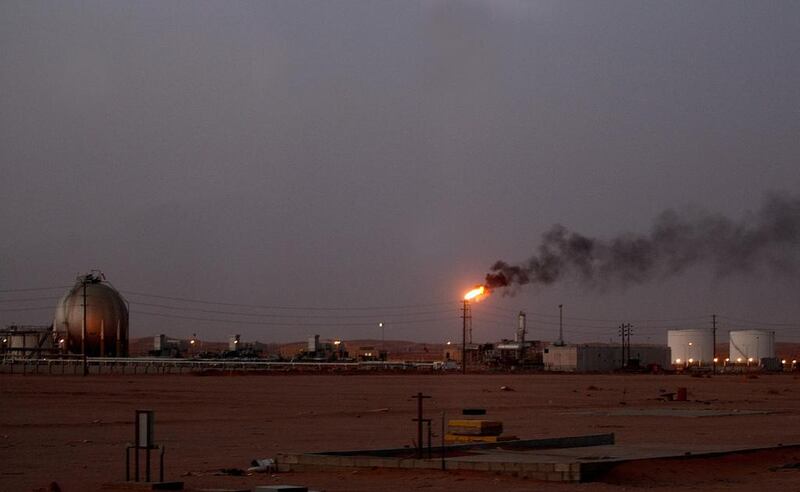Saudi Arabia signalled that it is defending its market share, telling Opec that it pumped its full quota of 10 million barrels per day of oil last month.
The Opec secretariat in Vienna said in its monthly report yesterday that Saudi Arabia reported production of just over 10 million bpd for last month, which was about 263,000 bpd higher than the previous month when it had cut to well below what it had pledged in November to support a deal to curb the world oil glut.
Last week the kingdom’s energy minister Khalid Al Falih said Saudi Arabia would not continue to bear the brunt of the burden in trying to speed along the balancing of a chronically oversupplied world oil market.
Oil prices fell sharply after the report, with world benchmark North Sea Brent futures dropping about 2 per cent from its intraday high to about US$50.72 per barrel late in the Arabian Gulf day.
Oil prices dropped 8 per cent last week after a report of a surge in US oil inventories, and on Mr Al Falih’s comments.
Mr Al Falih had noted that other contributors – particularly Russia, from a group of non-Opec producers that joined the deal in December – had not yet cut the amount they had pledged to, while also warning investors in the surging US shale sector that they could not rely on Saudi Arabia to cede market share to support their industry.

“They are playing mind games,” said Eugene Lindell, senior crude market analyst at JBC Energy in Vienna. “They are basically saying that compliance needs to be there or we could take this a lot further.”
The Opec report offers no commentary on Opec production, although it is principally read to determine the discrepancy that may exist between self-reported numbers by its member countries and estimates by “secondary sources”, which comprise surveys of analysts by news agencies and data from firms that track oil tankers. The latter are used as the official basis for the output deal, although some countries are seen as generally reporting their output accurately to Opec.
The output levels are widely regarded to be unreliable gauges on their own, so that the real proof is in data on inventories in the US, Europe, Asia and in offshore storage.
Saudi Arabia had sent another signal that it would defend its market when it told its customers in Asia the week before last that it would cut its official selling prices and give them full allocations for delivery in April.
“It was a shot over the bow when they saw all that Atlantic Basin crude encroaching on the Asian market, saying they don’t want to cede any more market share,” said Mr Lindell.
The big dilemma for Saudi Arabia and its allies is that expectations for their production deal ran way too high in a market that takes months to show changes in underlying fundamentals.
The exuberant market coverage of the deal and speculative bets in the futures market ran prices up before the deal could have effect, some analysts note.
“It is clear that the physical markets are lagging financial market expectations,” says Francisco Blanch, head of commodities research at Bank of America Merrill Lynch. But he sees the market slowly eating into the glut.
“Crude oil stocks in America are still extremely bloated,” he concedes. But “the oil market is likely to change direction very rapidly from here ... Global oil demand remains very resilient following two years of tremendous growth, [while] an acceleration in US oil exports is key to the rebalancing of global oil markets, as it will clean up the large North American surplus.”
Saudi Arabia’s aim in the meantime is to keep prices high enough to alleviate the financial strain on oil-dependent producers while keeping its competitors guessing.
amcauley@thenational.ae
Follow The National's Business section on Twitter





